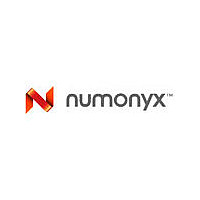N25Q128A11B1240E NUMONYX, N25Q128A11B1240E Datasheet - Page 30

N25Q128A11B1240E
Manufacturer Part Number
N25Q128A11B1240E
Description
Manufacturer
NUMONYX
Datasheet
1.N25Q128A11B1240E.pdf
(185 pages)
Specifications of N25Q128A11B1240E
Cell Type
NOR
Density
128Mb
Access Time (max)
7ns
Interface Type
Serial (SPI)
Boot Type
Bottom
Address Bus
1b
Operating Supply Voltage (typ)
1.8V
Operating Temp Range
-40C to 85C
Package Type
TBGA
Program/erase Volt (typ)
1.7 to 2/8.5 to 9.5V
Sync/async
Synchronous
Operating Temperature Classification
Industrial
Operating Supply Voltage (min)
1.7V
Operating Supply Voltage (max)
2V
Word Size
8b
Number Of Words
16M
Supply Current
20mA
Mounting
Surface Mount
Pin Count
24
Lead Free Status / Rohs Status
Supplier Unconfirmed
- Current page: 30 of 185
- Download datasheet (6Mb)
5.3.4
Note:
5.3.5
30/185
This is followed by the internal Program cycle (of duration tPP).
To spread this overhead, the Quad Command Page Program (QCPP) instruction allows up
to 256 bytes to be programmed at a time (changing bits from 1 to 0), provided that they are
in consecutive addresses on the same page of memory.
For optimized timings, it is recommended to use the QCPP instruction to program all
consecutive targeted bytes in a single sequence versus using several QCPP sequences
with each containing only a few bytes. See
The QCPP instruction is transmitted across 4 data lines except when VPP is raised to
VPPH.
The VPP can be raised to VPPH to decrease programming time (provided that the bit 3 of
the VECR has been set to 0 in advance). When bit 3 of VECR is set to 0 after the Quad
Command Page Program instruction sequence has been received, the memory temporarily
goes in Extended SPI protocol, and is possible to perform polling instructions (checking the
WIP bit of the Status Register or the Program/Erase Controller bit of the Flag Status
Register) or Program/Erase Suspend instruction even if DQ2 is temporarily used in this VPP
functionality. The memory automatically comes back in QIO-SPI protocol as soon as the
VPP pin goes Low.
Subsector Erase, Sector Erase and Bulk Erase
Similar to the Extended SPI protocol, Subsector Erase (SSE)(1), the Sector Erase (SE) and
the Bulk Erase (BE) instructions are used to erase the memory in the QIO-SPI protocol.
These instructions start an internal Erase cycle (of duration tSSE, tSE or tBE).
The Erase instruction must be preceded by a Write Enable (WREN) instruction.
The erase instructions are transmitted across 4 data lines unless the VPP is raised to
VPPH.
The VPP can be raised to VPPH to decrease erasing time, provided that the bit 3 of the
VECR has been set to 0 in advance. In this case, after the erase instruction sequence has
been received, the memory temporarily goes in extended SPI protocol, and it is possible to
perform polling instructions (checking the WIP bit of the Status Register or the
Program/Erase Controller bit of the Flag Status Register) or Program/Erase Suspend
instruction even if DQ2 is temporarily used in this VPP functionality. The memory
automatically comes back in QIO-SPI protocol as soon as the VPP pin goes Low.
Subsector Erase is only available on the 8 Bottom (Top) boot sectors, and is not available in
uniform architecture parts
Polling during a Write, Program or Erase cycle
It is possible to check if the internal write, program or erase operation is completed, by
polling the dedicated register bits of the Read Status Register (RDSR) or Read Flag Status
Register (FSR).
When the Program or Erase cycle is performed with the VPP, the device temporarily goes in
single I/O SPI mode. The protocol became again QIO-SPI as soon as the VPP pin voltage
goes low.
Table 33.: AC
Characteristics.
Related parts for N25Q128A11B1240E
Image
Part Number
Description
Manufacturer
Datasheet
Request
R

Part Number:
Description:
128-mbit 3 V, Multiple I/o, 4-kbyte Subsector Erase On Boot Sectors, Xip Enabled, Serial Flash Memory With 108 Mhz Spi Bus Interface
Manufacturer:
Numonyx
Datasheet:

Part Number:
Description:
Numonyx� Embedded Flash Memory J3 V. D
Manufacturer:
Numonyx
Datasheet:

Part Number:
Description:
Manufacturer:
NUMONYX
Datasheet:

Part Number:
Description:
Manufacturer:
NUMONYX
Datasheet:










